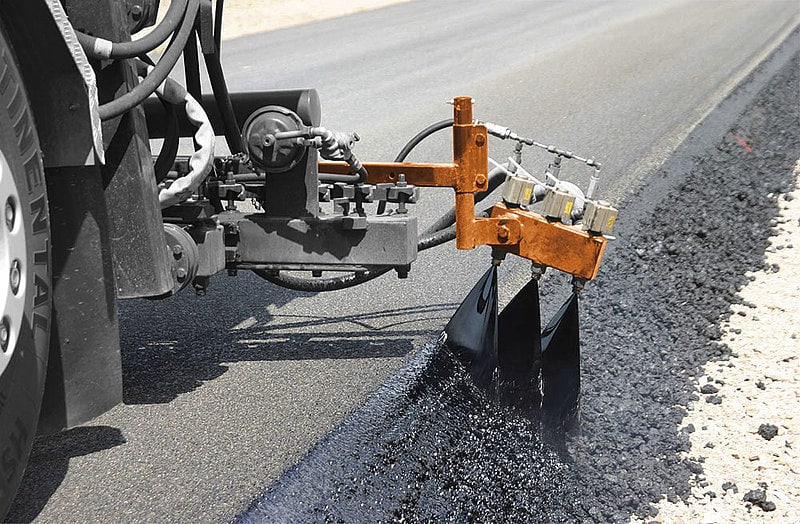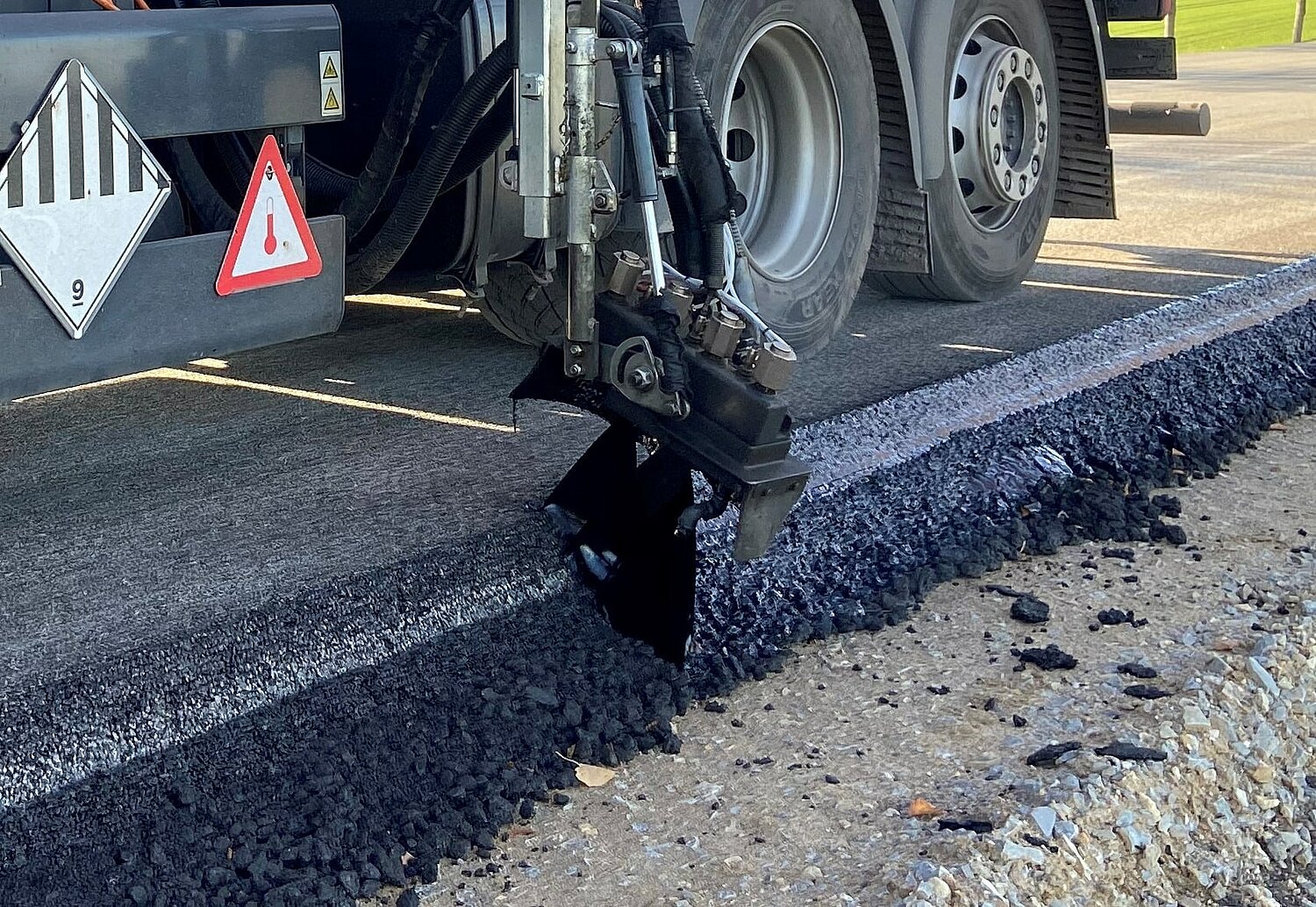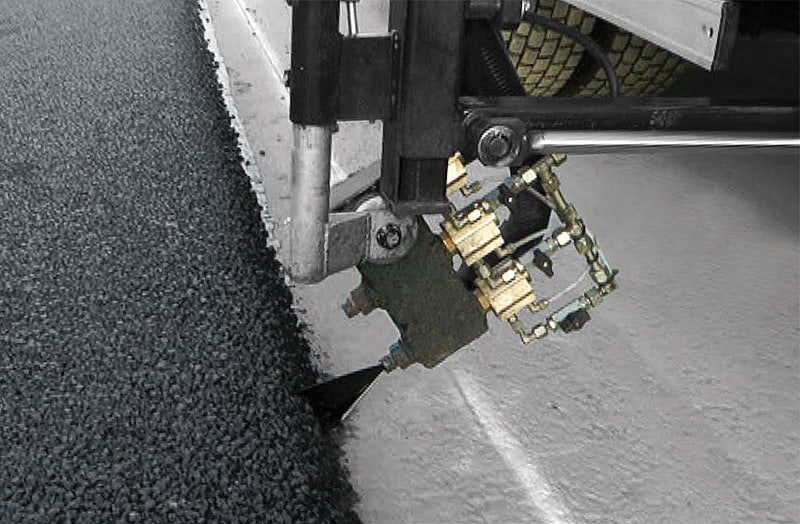Different machines are best suited for preparing the layer bonding in asphalt, depending on the practical application:
→ BSM bond coat sprayers | → SKS edge spraying machines | → LS cookers | → BTA bitumen tank trailers
Even layer bonding as a basis
Layer bonding refers to the bond between individual layers or levels of the asphalt structure. Weathering and traffic lead to movements and stresses between these layers. An optimum bonding quality enables these stresses to be compensated for.
Bonding of the layers when applying asphalt mixture is primarily created by two factors:
It is also important to ensure that the binding agent is precisely metered and evenly applied. Uneven distribution causes the same local consequential damage as over or under metering of the binding agent for the entire area.
A deep, interacting structure offers the highest load bearing capability. Further information on meeting the high quality standards for layer bonding are set out in ZTV Asphalt-StB 07. The technical delivery conditions for special binders and bitumen-based preparations -T L BE-StB 07 - define the requirements for the binding agent type.
BSM bond coat sprayers offer the best technical features for application of the binding agent.
Flowmeters and the proven Touch-Control binding agent control system from schäfer-technic enable the required binding agent quantity to be precisely applied. The control unit also allows detailed documentation of the results, e.g. as a printout or in digital form.
Edge sealing
The production, forming and design of the free edges of all asphalt layers is referred to as edging. Their sealing is known as edge sealing.
The primary aim is to prevent later water ingress that would attack the bonding of the layers.
After production of the road surface structure from asphalt with a transverse gradient on one side, ZTV Asphalt-StB 07 stipulates that the higher edge is to be sealed. In torsion areas, both edges have to be sealed. For each centimetre of layer thickness and metre of application, a hot bitumen quantity of at least 40 g has to be applied over the entire flank area.
SKS-machines can gently heat up the hot binding agent to the working temperature and temper it. The material is conveyed to the edge spraying bar through electrically heated hoses with no loss of temperature.
The spray widths can be adjusted depending on the layer thickness to be treated. This can be done using the machine control unit along with the spray pressure. To achieve optimum results, the spray quantity is automatically adapted to changes in the travel speed.
The SKS models can be installed on BSM bond coat sprayers or even self-driving sealing cookers.
→ SKS edge spraying machines | → BSM bond coat sprayers | → LS cookers


Middle seam
Contact surfaces must be bonded properly.
For example, this can be achieved by applying asphalt in widths, where the contact surfaces have similar properties and are laid next to or behind one another.
This proper bonding is achieved by spraying on middle seams and connections.
For this purpose, the SKS-machines are perfectly suited as well.
→ SKS edge spraying machines | → BSM bond coat sprayers | → LS cookers

Different machines are best suited for preparing the layer bonding in asphalt, depending on the practical application:
→ BSM bond coat sprayers | → SKS edge spraying machines | → LS cookers | → BTA bitumen tank trailers